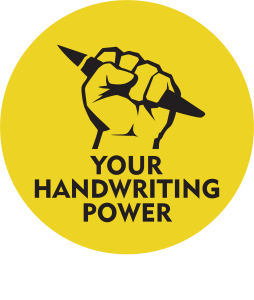Handwriting is a reflection of our thought processes and personality. Each stroke of a pen, and each formation speaks volumes about how a person thinks, consciously, as well as subconsciously. Graphologists analyze the writing taking into account the size, the slant, the formation of letters, and the pressure with which one writes; all pointing to the inherent nature and peculiar traits of a person. For example, a large handwriting size points to a confident, energetic and extroverted person and a small to precise, analytical, and introverted. Check your handwriting size and that of a friend who is the exact opposite when compared with social aptitude.
Good handwriting VS bad handwriting
In graphology, there is no such thing as good or bad handwriting. Yes, there are positive and negative traits. There are some red flags too. A good script (the actual handwriting) however can be well organized. Typically, this is a writing that shows consistency of letters and spacing, pressure, and style. This shows a person who knows his mind. When the letters and word formations keep changing their style it indicates a confused person.
Figure A shows a clear well-organized script

Figure B shows a script that belongs to a confused person with a troubled mind.

So then can we say that a writing that looks beautiful belongs to a beautiful soul? Certainly no.
What one must avoid in handwriting is:
- Decorations
- Unnecessary pen strokes
- Ornamentation of the basic letter
- Curlicues
- The long lead-in or ending strokes
- Knots
- Exaggerations
- Fancy scrolls
While, they may make the handwriting look pretty, but have completely reverse connotations in Graphology. They add complications and generally show that the person is more focused on the style than the content. I will personally not be impressed by such an application for an important job.
When a teacher tells me that a learner is weak in his studies, I quickly look at his handwriting to tell me the truth. Is it not a fact that the child may not be relating to the teaching style? What if he is not an auditory learner or a visual one too? Handwriting could also reveal the truth about learning disorders if any. In this case, too, a different teaching technique is suggested. There could be dozens of reasons why a child is not performing at school; being weak could be just one of the many possibilities. Handwriting analysis will at least take the blame off the child and focus instead on better teaching styles and a better understanding of the mind.
Analysis can help any individual live a more fulfilling life. Analysis for compatibility before getting into a permanent relationship will just ensure lifelong mental safety and security for both partners. At least before getting into a lifelong relationship, one is aware of all that h/she is getting into and is prepared for all consequences. The analysis will help save a lot of time, energy, and money spent on recruiting the wrong employee. An employee that is over-ambitious and will not stay in the present job for long, an employee not loyal, an employee who may bring a lot of court cases to the firm, or even an employee who may cheat, all from a single page of handwriting. Isn’t that beautiful, like a perfect guide to recruiting a loyal, competent, and honest employee? It is truly a placement opportunity tool.
The first time I analyzed myself I almost felt like standing in front of an x-ray machine. A feeling of being vulnerable, revealing myself to a stranger in all possible ways. Though it did help me know myself in ways like never before. I changed. I felt calmer, happier, and most importantly at peace with myself.
Handwriting is an imprint of the self on the page.







